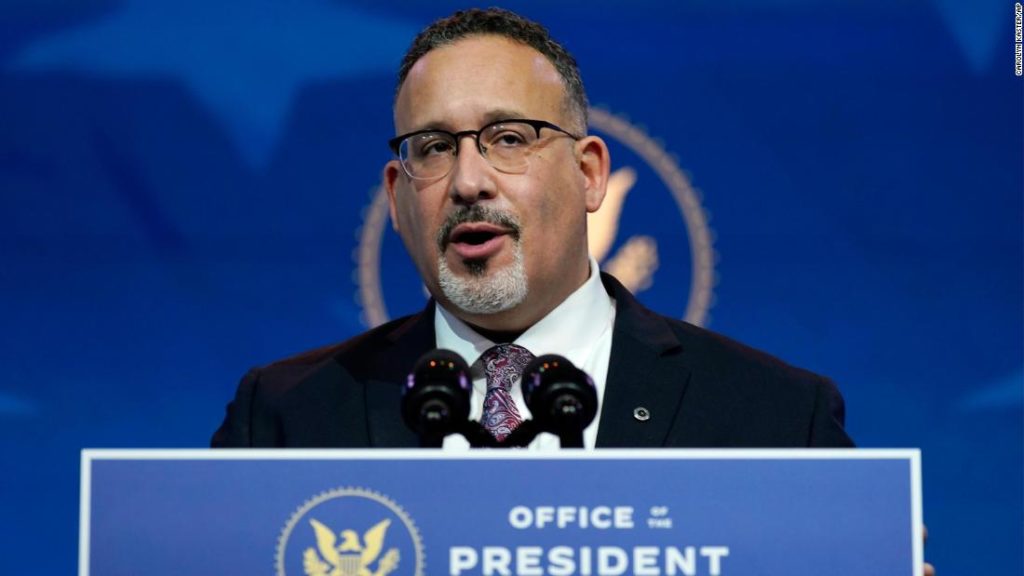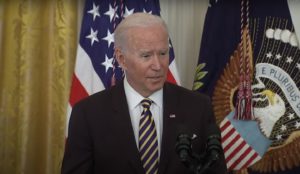Plans to regulate distance education raises concerns over continued innovation, access
The Biden administration has announced plans to increase oversight over distance education, prompting educational experts to warn it will only hinder online programs’ access and flexibility for…

The Biden administration has announced plans to increase oversight over distance education, prompting educational experts to warn it will only hinder online programs’ access and flexibility for students.
The increased oversight will help the U.S. Department of Education “answer important questions about student outcomes” and expand its “very limited data on students enrolled in and programs offered through distance education,” according to a July 17 press release.
However, some educational organizations have expressed concerns over whether such changes will hinder more than help students who take courses outside traditional classrooms.
“The proposed changes worry some higher education groups, which say they could hamper innovation, unfairly target online classes and limit access for students who could benefit from the flexibility that online education provides,” writes Katherine Knott for Inside Higher Ed.
The public can submit formal comments on the proposed regulations, which have been posted to the Federal Register, until Aug. 23.
‘More red tape’
An estimated 53% of all U.S. students were enrolled in at least one online course in the 2022-23 academic year, a decrease from the 2021 high of 59% but still above pre-COVID 19 pandemic levels.
The regulations would require more manpower and resources from colleges, some of which are already under-resourced, said Emmanual Guillory, senior director of government relations at the American Council on Education.
“It just adds more stress and burden upon the men and women on our campuses that are really trying to best produce quality academic programming, ensure teaching and learning on campuses,” he said, “and it’s just more red tape.”
Guillory took issue with one proposed change banning “asynchronous instruction,” which includes activities such as playing prerecorded videos, completing reading assignments, or scrolling through pages.
These had been counted toward a required number of clock hours in distance education courses, which tend to be career focused and shorter than other programs. Typically, these programs offer a certificate to help students in the workforce upon successful completion.
“They can do it at their own pace,” Guillory said, adding these asynchronous activities often benefit nontraditional students such as parents. “They’re working two or three jobs. They’re trying to support their families in whatever ways, and they don’t have the luxury to have a carved-out time every week to go sit in the classroom with their peers and learn.”
Prohibiting the use of asynchronous instruction could end up hurting students the department says it most wants to help, Guillory noted.
“You are limiting the ability of these students to access postsecondary education by using student aid funding, and this could have a huge impact on low-income students.”
The department argued asynchronous learning could result in a “substandard education” and “puts students and taxpayers at risk.” While it didn’t have data about the number of programs that include asynchronous instruction, it estimated “very few institutions” would be affected.
However, many representatives of those institutions disagree.
Implementing these changes will make it more complicated to offer distance education at all, said Russell Poulin, executive director of the Western Interstate Commission for Higher Education’s Cooperative for Educational Technologies.
“They’re right that there’s some really bad practices out there, but they’ve also said themselves that there are institutions that have spent a lot of money and spent a lot of time and effort in order to make sure that they’re right,” he said of asynchronous instruction. “There needs to be a better solution than this one.”
‘Antiquated bias’
Other changes include requiring colleges to create a virtual location for all their distance programs and provide more information to the government concerning student attendance.
“Institutions can often easily determine when students stop attending because a school’s systems can often identify when students submit assignments or interact with instructors and students during lectures and course discussions,” education department officials wrote.
However, “many of our institutions have indicated to us that that’s not the case,” said Jordan DiMaggio, vice president of policy and digital strategy at UPCEA, an online and professional education association.
The department has underestimated the difficulty in complying with its regulations, which possibly entails systematic changes to institutional learning management systems, DiMaggio explained.
“There’s questions on whether the department is truly focused on protecting students’ outcomes and taxpayer dollars,” he said. “Or do they kind of reveal an antiquated bias against online education that’s framed by some suspicion and distrust of the field as a whole?”


